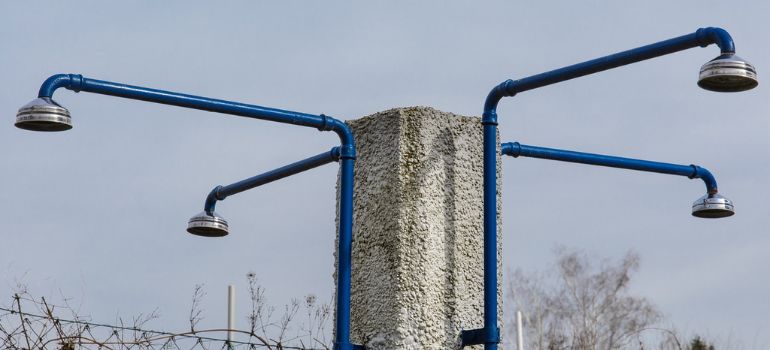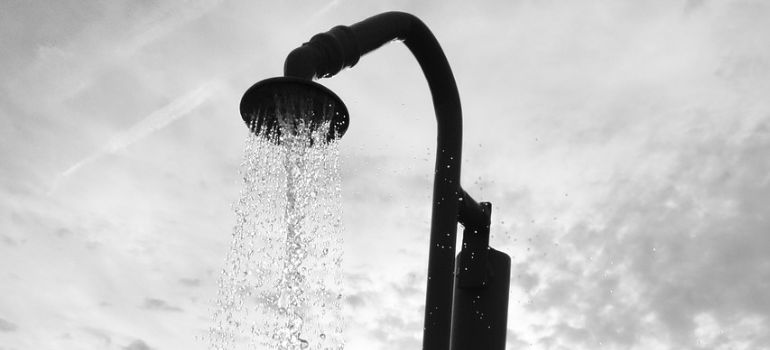Introduction
A shower head flange is a small but essential component of your bathroom’s shower system. Its primary purpose is to secure the shower head to the wall, ensuring a stable and leak-free connection. Over time, these flanges may become loose or damaged, leading to water leaks and an unreliable shower experience. In this article, we will guide you on how to secure a shower head flange, allowing you to enjoy a consistent and worry-free showering experience.
Tools and Materials
Before you begin the installation process, it’s essential to gather the necessary tools and materials:
- Adjustable Wrench: You’ll need an adjustable wrench to help remove the old shower head flange and tighten the screws on the new one securely.
- Screwdriver: A screwdriver will be handy for removing the old flange and potentially for other aspects of the installation process.
- Plumber’s Tape: Plumber’s tape, also known as Teflon tape, is used to create a watertight seal when attaching the new flange. It prevents water from leaking at the connection points.
- Pipe Thread Sealant: Pipe thread sealant is another crucial material for sealing the threads of the shower pipe. It enhances the watertight seal and prevents leaks.
- New Shower Head Flange: You’ll need a new shower head flange to replace the old one. Make sure it matches the size and design you desire for your shower.
Safety Precautions
Safety should be your top priority when working on any plumbing project. Here are some essential precautions to keep in mind:
- Always turn off the water supply to your shower before starting any work.
- Use caution when handling tools to prevent accidents or injuries.
- If you’re not comfortable with any step of the process, consider hiring a professional plumber.
Step 1: Turn Off Water Supply
Start by turning off the water supply to your shower. This can typically be done by closing the water valve located near the showerhead or by shutting off the main water supply to your home.
Step 2: Remove the Old Flange
Use a screwdriver or wrench to remove the old shower head flange carefully. Turn it counterclockwise until it comes loose. Be gentle to avoid damaging the shower wall.
Step 3: Clean the Area
Once the old flange is removed, clean the area around the shower pipe thoroughly. Remove any old sealant or debris to ensure a smooth and secure installation.
Step 4: Apply Sealant
Apply plumber’s tape and pipe thread sealant to the threads of the shower pipe. This will create a watertight seal when attaching the new flange.
Step 5: Attach the New Flange

Carefully slide the new shower head flange onto the shower pipe. Ensure it fits snugly against the shower wall.
Step 6: Tighten the Screws
Use a wrench or screwdriver to tighten the screws on the flange securely. Make sure it is firmly in place.
Step 7: Check for Leaks
Turn on the water supply and check for any leaks around the flange. If you notice any leaks, tighten the screws further and retest until the leaks stop.
Step 8: Turn On the Water Supply
Once you’re confident that there are no leaks, turn on the water supply fully. Enjoy your newly secured shower head flange and a leak-free shower.
Maintenance Tips
To ensure the longevity of your shower head flange, here are some maintenance tips:
- Periodically check for any signs of loosening or leaks.
- If you notice any issues, promptly address them to prevent further damage.
- Consider applying a fresh layer of sealant if you experience leaks over time.
Additional Tips for Shower Head Maintenance
While securing the shower head flange is an essential part of maintaining your shower system, there are a few more tips to keep in mind to ensure your entire shower setup stays in excellent condition:
- Clean the Shower Head: Over time, mineral deposits and debris can accumulate in the shower head, affecting water flow and pressure. To prevent this, remove the shower head periodically and soak it in a mixture of vinegar and water to dissolve these deposits. Rinse it thoroughly before reattaching it to the flange.
- Inspect the Shower Hose: If your shower includes a flexible hose, check it for any cracks, leaks, or signs of wear. Replace the hose if you notice any damage to maintain a reliable water supply.
- Check for Leaks Around Faucets: Besides the shower head, pay attention to any leaks or drips from the shower faucet or handles. Addressing these issues promptly can prevent water damage and save on water bills.
- Replace Seals and Gaskets: If you encounter persistent leaks or drips, inspect the seals and gaskets in the shower plumbing. Over time, these components can deteriorate and may need replacement to maintain a watertight seal.
- Regularly Clean the Shower Area: Mold and mildew can develop in the shower area due to the constant exposure to moisture. Regularly clean the shower tiles, grout, and any silicone seals to prevent the growth of mold and maintain a clean and hygienic bathroom.
FAQs
If the old flange is stuck, use penetrating oil to loosen it. Allow it to sit for a few hours before attempting to remove it again.
It’s recommended to replace the old flange with a new one to ensure a secure and leak-free connection.
While it’s a relatively straightforward task, if you’re unsure or uncomfortable, it’s always a good idea to consult a professional plumber.
Check the tightness of the screws on the flange. If leaks persist, you may need to reapply sealant and ensure a proper seal.
It’s a good practice to inspect your shower head flange annually for any signs of wear, loosening, or leaks.
Conclusion
Securing your shower head flange is a simple yet crucial maintenance task that can prevent water leaks and ensure a consistent showering experience. By following the steps outlined in this guide and taking proper precautions, you can enjoy a worry-free shower with confidence in your newly secured shower head flange.




